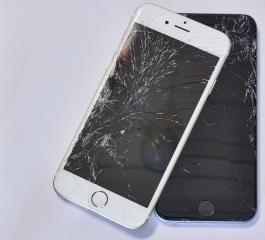If you want to understand and learn more about Styrofoam and learn how to recycle it, know that this is the ideal article for you. This is because, this is full of interesting and important information on the subject in question. Shall we go?
The composition of Styrofoam
Styrofoam, known as expanded polystyrene or EPS, is a lightweight, rigid plastic material widely used in packaging, thermal insulation, and in various disposable products such as cups and trays.
Its structure, composed mainly of air, makes it resistant, thermally insulating and with low electrical conductivity.
Although versatile and inexpensive, styrofoam is a significant source of environmental pollution due to its difficulty in recycling and the long time it takes to decompose in nature, which can take hundreds of years.
Is Styrofoam recyclable?
Many people still have doubts about the recyclability of Styrofoam, but it is important to know that this material is fully recyclable.
Styrofoam belongs to the category of thermoplastics, molded with increasing temperature, becoming raw material for other products.
Polystyrene foam is made from petroleum derivatives and, although it is recyclable, it takes about 500 years to decompose.
In Brazil, according to Knauf, almost 34.5 tons of Styrofoam are recycled annually, and this number can increase even more with proper disposal
The company recycles Styrofoam, and this recycled material is reused in the manufacture of new plastic parts, glues, solvents, shoe soles and even in the generation of thermal electrical energy.
Simply deposit the material in bins designated for plastics (usually red in color) or forward it to the nearest selective collection.
Also, there are three simple ways to repurpose Styrofoam. See below:
- Mechanical Reuse: Companies inject Styrofoam pellets to transform them into new plastic objects.
- Chemical Reuse: Styrofoam undergoes a melting process to manufacture glues, solvents and even shoe soles.
- Energy Reuse: It is possible to take advantage of the calorific value of styrofoam to generate thermal electrical energy.
However, it is important to remember that Styrofoam takes a long time to decompose in nature, which causes it to take up space in landfills and contribute to environmental pollution.
How to dispose of Styrofoam?
In addition to the scarcity of collection points, many people are not aware of the various possibilities for recycling Styrofoam and are unaware of the proper way to dispose of it.
The essential practice to avoid the accumulation of Styrofoam in sanitary landfills is to recycle it, as the recycled material can be reused as raw material. To increase Styrofoam recycling, it is essential to follow a few simple steps:
Sanitize the material: Washing and drying the Styrofoam before disposal is important to remove organic residues. Adhesives, food scraps, glues and labels can accumulate dirt and make recycling difficult, but grease or sauce stains do not impede the process.
Discard in the proper place: Styrofoam belongs to the plastic category, so people should dispose of it in the red recycling bins.
By adopting these practices, we can significantly contribute to the recycling of styrofoam and reduce the environmental impact caused by its improper disposal.
Discard locations
To ensure proper disposal of Styrofoam and to avoid environmental pollution caused by this material, it is important to use the red plastic bin.
In addition, other alternatives include Voluntary Delivery Points (PEV) and Ecopoints, where citizens can take their waste separately to different types of garbage.
The implementation of double containerization is also an effective option, with two containers at strategic points for organic waste and selective collection.
Conclusion
In conclusion, styrofoam is a recyclable material that, when disposed of correctly, contributes to the reduction of environmental pollution.
Its recycling allows its reuse in the manufacture of various products. There are three forms of reuse: mechanical, chemical and energetic.
It is important to sanitize the material before disposal and place it in the red plastic bin or use the Voluntary Delivery Points (PEV) and Ecopoints.
With these practices, we can preserve the environment and ensure a more sustainable future.


